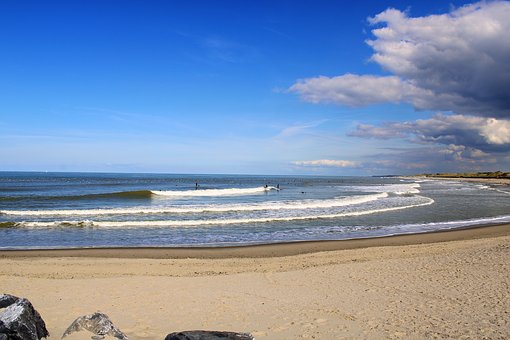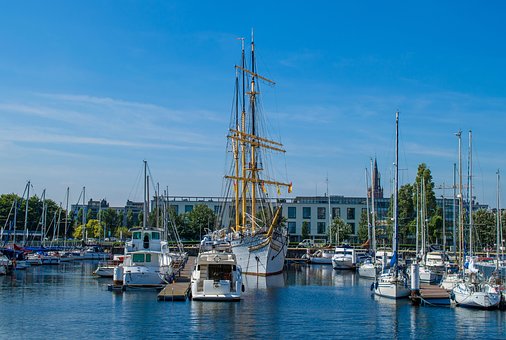Oostende
Tourist Information by Meredith Booney
Originally a small fishing village,
the city of Oostende received its city charter in the 13th century and
now has a population of 91,000 people, the largest population on the Belgian
coast. Set half way along the 40 mile Belgian coastline, it became popular
as a resort in the 19th century, when Kings Leopold I and II spent their
summers there. During World War II the city was badly bombed.
The city is protected from
the North Sea by a series of large dikes built in the late 14th century.
However, the city often fell victim to invading armies. Its importance
as a harbour rose in the 18th and 19th centuries, and a railway link to
Brussels was built in 1838. In 1846 it became a transit harbour to England,
sending its first ferry boat to Dover. Today, hundreds of passengers travel
between Oostende and England in a space of just two hours, which makes
it a good weekend resort for British travellers.
Named 'The Queen of the Belgian
sea-side Resorts, Oostende boasts a long and sandy beach and is a popular
beach resort for locals as well as visitors to Belgium, many of whom come
to surf and sail. The old town and fishing harbour are popular attractions,
and Oostende has much to offer in the way of shopping, eating and entertainment.

 Places
of interest: Places
of interest:
The twin-towered church of
St Peter & Saint Paul, close to the railway station, is a neo-gothic
building built of sandstone in 1904-5. It houses the mausoleum of Queen
Louise-Marie, Belgium's first Queen, who died in 1850 in Oostende.
The 'Fort Napoleon', north
of the city centre, is the only Napoleonic fortress still intact in the
whole of Europe. Built by Napoleon during the French occupation in 1810
and completed in 1812, it housed 260 soldiers. In the Second World War
it was used as a German barracks.
Between Oostende and Middelkerke,
near the beach, lies a large group of dunes known as the 'Raversijde Domain',
which is a natural nature reserve. Here also is the 'Atlantikwall', a complex
of tunnels and bunkers built by occupying German troops in the First and
Second World Wars. Nearby is also an archaeological site of a medieval
fishing village from 13th to 15th centuries.
For garden lovers, the Japanese
Garden in the Koningspark is worth a visit and can be found opposite the
swimming baths, near the sea wall.
Things to do:
A walk along the splendidly
clean and unspoilt beach, with a swim or paddle in the sea, is one of Oostende's
pleasantest activities, but there are plenty of further activities in the
centre and close to Oostende.
Oostende has several shopping
centres, including the traffic-free Kappellestraat, Adolf Buylstraat and
Witte Nonnestraat. Also, at the Alfons Pieterslaan and the Torhoutsesteenweg
you can shop all year round. Market day in Oostende is on Thursdays on
the Wapenplein, Groentemarkt and Mijnplein.
For those interested in history
and culture, Oostende has several museums and galleries to visit. The Museum
of Local History holds collections from the Neolithic and Roman times,
a maritime section and sections on the two world wars. The Museum of Fine
Arts holds works from the Belgian Masters, and at the Museum of Modern
Art you can see a wide range of paintings, sculptures and objects from
Belgium's recent history. Other places are the Museum Sint-Pieterstoren,
the Museum of Religious Arts, the North Sea Aquarium and the Schooner Mercator
which is a former Merchant Navy training ship now restored as a nautical
museum. James Ensor House is where the famous impressionist painter lived.
One of the most popular places
for families with children is the Maria Hendrika Park. Here you will find
minigolf, rowing and pedal boats, playgrounds and woodland walks. Refreshments
are available at the café.
You can also take a horse-drawn
carriage tour around the city, where you will be shown the interesting
sights of the city.

Food & Drink:
Whatever kind of food or
restaurant you are looking for you are likely to find it here. Oostende
has plenty of restaurants, cafes, bars and taverns both within its lively
city centre, and along the promenade. Wherever you go, you will find kiosks
selling mussels, fresh fish restaurants, and the ice cream is not to be
missed.
There are several bars selling
real ale, including the Café Botteltje and the Ostens Bierhuus.
Oostende also has a selection of English style pubs.
One of the most popular restaurants
in the city is the James Tavern in James Ensor Galerij 34, off Vlaanderenstraat.
In its friendly atmosphere, you can sample a wide range of local cuisine,
including their specialty, garnaalkroketten, or shrimp croquettes.
Of course, Oostende's best-loved
food is fresh fish, and you do not have to look too far to find a wide
choice of places specialising in seafood. One of the best fish restaurants
is the Old Fisher on the Fisherman's Wharf. This has a relaxed but elegant
atmosphere where you can sample a wide range of local fresh fish dishes.
Another fish restaurant is the David Dewaele, a family-run restaurant serving
French cuisine and fish fresh from the North Sea.
Hotels & Accommodation
Alpha Hotel
Hotel Ter Kade
Royal Astrid
Hotel Princess
Hotel Burlington
Ambassadeur
Entertainment:
If you are seeking the local
nightlife, the first place to head for is Langestraat where you will find
cabarets, night clubs and bars, as well as the famous Kursaal Oostende,
one of the largest casinos in Europe. The casino contains gaming rooms,
a concert hall where you can regularly hear concerts, operettas and ballet,
disco, rooftop restaurant and gaming rooms.
Many of the bars and pubs
offer live performances, including jazz, blues or contemporary music. There
are English pubs, at least one Irish pub, and, of course, good strong beer.
Between May and September
is the racing season and anyone interested in the sport must take a trip
to Wellington Racecourse.
Every year in the first week
in March, Oostende holds a carnival with a different theme each time and
in October there is the annual fun-fair.
top
|



